Table of Content
Сhicken farming business plan for starting your own business
The chicken farming industry is bigger than you think. Americans consume a whopping 201 lbs. of chicken meat per head a year. The poultry industry is a $40.4billion giant. This is a business that is not going out of business anytime soon.
To start this business, you will be needing a business plan for poultry farming which can tell you how to open a chicken farm. This document is a strategic business plan that can help you through all the stages of opening and successfully operating a chicken farm. Unlike a cattle feedlots business plan or a dairy farming business plan, this business can offer you more money.
Executive Summary
2.1 The Business
Kiley Protein farm will be a registered and licensed meat and egg producer based in Kansas City Missouri. The business will act as a model for starting up a chicken farm. The aim of this business will be to provide the best products.
2.2 Management of Chicken Farming Business
In order to make sure that the business runs smooth and without any hiccup, Kiley Lawson, the owner of the business will hire 2 managers and a doctor. The managers will be responsible for procurement and sales, while the doctor will be the one looking after the operations of the farm. If you need to know how to start chicken farming, management is the first thing you need to learn. This is not like a business plan for bank as you need to be involved at all levels to make sure that the farm operates profitably.
2.3 Customers of Chicken Farming Business
Before we can explore more aspects of how to set up a poultry farm business, we need to see what the customers are that we are working with. The main customers of this business will be:
- Chicken retailers in the area.
- Hotels and restaurants.
- Grocery stores that sell chicken.
- End consumers.
2.4 Business Target
The target of this business is to make a name and get a considerable business share in the poultry market of the US. Here are some objective targets that we will try to meet:
- Opening three more farms within 5 years of starting.
- Starting to generate at least $29,200 in revenue per month by the end of three years.
- Establishing a chicken meat and eggs brand that is trusted and reputable.
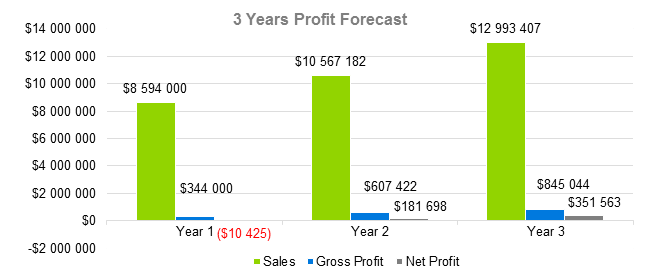
Company Summary
3.1 Company Owner
Kiley Lawson will be the owner of the Kiley Protein Farm. Kiley has been a manager in a poultry farm for the last 5 years. She has got money in inheritance and now she wants to invest it in a good business. Having the funds and the experience in this field made her the perfect owner and chief executive of a poultry farming business.
3.2 Why the Chicken Farming Business is being started?
Kiley has noticed that there is a gap in the market. Kansas City is a big consumer of meat in the area but they have to import it from other cities as the production in the city cannot suffice the demand. Kiley wants to bridge this gap. This example of business plan for poultry farming will cover all the aspects there are about chicken farming and how Kiley will be filling the gap.
3.3 How the Chicken Farming Business will be started?
Step1: Planning
The first thing you need for starting a poultry farm business is a plan for the business. In this phase, you need to conduct a survey to find out the demand of poultry products in the area and compare it to the production.
This sample chicken farming business plan will cover how you can take advantage of the gap in the demand and supply and how you can make a name in the market.
Step2: Establish a Brand
The next step in setting up a chicken farm is establishing a brand. People prefer buying from a brand with a known name. So, as the poultry farm building starts coming out of the ground, you need to start the marketing effort to make the brand known.
Step3: Building the Farm and Outlets
The next step is building a farm and setting up sale points. At the start, Kiley is planning to make a farm capable of housing 5,000 chickens for meat and 2,000 layers for eggs. 2 farm outlets will be opened, one outside the farm and one in Downtown Kansas City.
Step4: Going Online
As people are shifting to online shopping, Kiley Protein will set up an online store for customers.
Step5: Promote and Market
Marketing effort will be started to make sure the people know there’s a new chicken producer in the town.
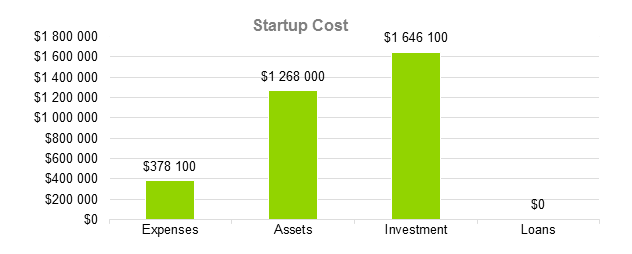
| Start-up Expenses | |
| Legal | $240,000 |
| Consultants | $0 |
| Insurance | $30,000 |
| Rent | $30,000 |
| Research and Development | $25,000 |
| Expensed Equipment | $49,000 |
| Signs | $4,100 |
| TOTAL START-UP EXPENSES | $378,100 |
| Start-up Assets | $340,000 |
| Cash Required | $370,000 |
| Start-up Inventory | $48,000 |
| Other Current Assets | $230,000 |
| Long-term Assets | $280,000 |
| TOTAL ASSETS | $1,268,000 |
| Total Requirements | $1,646,100 |
| START-UP FUNDING | |
| Start-up Expenses to Fund | $378,100 |
| Start-up Assets to Fund | $1,268,000 |
| TOTAL FUNDING REQUIRED | $1,646,100 |
| Assets | |
| Non-cash Assets from Start-up | $1,656,000 |
| Cash Requirements from Start-up | $372,000 |
| Additional Cash Raised | $39,000 |
| Cash Balance on Starting Date | $35,000 |
| TOTAL ASSETS | $2,102,000 |
| Liabilities and Capital | |
| Liabilities | $29,000 |
| Current Borrowing | $0 |
| Long-term Liabilities | $0 |
| Accounts Payable (Outstanding Bills) | $37,000 |
| Other Current Liabilities (interest-free) | $0 |
| TOTAL LIABILITIES | $66,000 |
| Capital | |
| Planned Investment | $1,646,100 |
| Investor 1 | $0 |
| Investor 2 | $0 |
| Other | $0 |
| Additional Investment Requirement | $0 |
| TOTAL PLANNED INVESTMENT | $1,646,100 |
| Loss at Start-up (Start-up Expenses) | $389,900 |
| TOTAL CAPITAL | $2,036,000 |
| TOTAL CAPITAL AND LIABILITIES | $2,102,000 |
| Total Funding | $1,646,100 |
Services
The next thing needed to complete this chicken farming business plan template is deciding what services we will be providing. The main service we will provide will be the provision of class A poultry meat and eggs. However, as this is going to be an organic chicken farming business, here are some of the services we will be providing.
- Provision of Organic Meat to the End Consumer will be the main service we will provide. The sales in this service might be low in volume but the high demand and price of organic meat will make it worth our while. We will only be selling organic meat from our own outlets.
- Provision of Organic Eggs to the End Consumer will be the second service we will be providing. This is also a segment of the market with a low volume of sales but high profit margins.
- Provision of Meat to Restaurants will be one of the bulk services we will be providing. These customers will not be high paying, but the volume of these sales will be high, making this part of the business profitable.
- Provision of Meat and Eggs to Retailers will be another service that will attract a large volume of sales. We will provide the product to all retailers at a better price that the competition.
Marketing Analysis of Chicken Farming Business
UK Start-Up Visa Business Plan
If you want to know how to write a business plan for a chicken farm, you need to run a thorough marketing analysis of the industry. If we look at the trends in the poultry industry, the consumption of meat in the US has been up by as much as 540% since 1940. This translates to a multibillion-dollar industry that has a scope for aggressive expansion just like a mushroom farming business plan.
However, this must also be noted that starting a chicken business is not an easy feat to undertake. This is mainly because the industry already has a lot of well-reputed and established brands that are providing the services.
Let’s explore more marketing factors related to this poultry farm business plan.
5.1 Market Trends
If you want to know how to open a chicken farm, you need to see the market trends. It can be seen that the chicken market has grown from $8.3 billion in 2008 to more than $40 billion in 2018. Experts are expecting another 300% growth in the sector by 2030. This means one thing; the business is a good one to enter.
5.2 Marketing Segmentation
The next part of this poultry farming business proposal is the marketing segmentation. Following are the main market segments that we will be targeting.
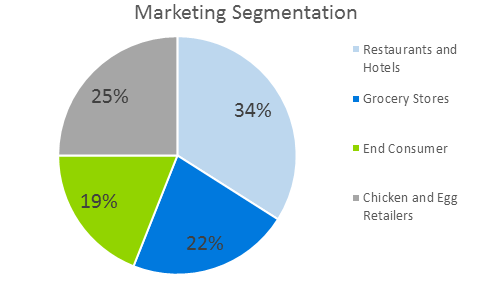
5.2.1 Restaurants and Hotels
Our largest customers will be these. We will make agreements with them to be the sole suppliers of all their meat and eggs. This will make us a bunch of money and that too for a long period of time.
5.2.2 Grocery Stores
We’ll offer frozen meat products and eggs at the popular grocery store in the area. Once the brand makes a name for itself, this will become one of the most profitable segments of our market.
5.2.3 End Consumer
We will be opening two outlets to sell the product directly to the end consumer. This will not be a very profitable thing at the start but once we penetrate this segment of the market, we can make top dollar.
5.2.4 Chicken and Egg Retailers
We will provide our product to the retailers who have established sales and are selling product from other producers. We will offer it at a lower price to shift them to us.
| Market Analysis | |||||||
| Potential Customers | Growth | Year 1 | Year 2 | Year 3 | Year 4 | Year 5 | CAGR |
| Restaurants and Hotels | 34% | 43,000 | 45,000 | 46,000 | 47,000 | 49,000 | 10.00% |
| Grocery Stores | 22% | 25,000 | 26,000 | 28,000 | 29,000 | 31,000 | 10.00% |
| End Consumer | 19% | 18,000 | 19,000 | 21,000 | 23,000 | 25,000 | 10.00% |
| Chicken and Egg Retailers | 25% | 35,000 | 36,000 | 37,000 | 39,000 | 41,000 | 11.00% |
| Total | 100% | 121,000 | 126,000 | 132,000 | 138,000 | 146,000 | 10% |
5.3 Business Target
- To be a leading provider of meat and eggs in the US.
- To expand the business worldwide in 10 years.
- To establish a reputable brand of organic meat and eggs.
- To be the best meat and eggs provider in the state of Missouri.
5.4 Product Pricing
We will keep the prices low at the start to attract customers. This will be done for the first six months. Once we get customers and make a name of the brand then we can increase the prices gradually and adjust them where there is the perfect balance of sales volume and profit margin.
Marketing Strategy
Note
It is of cardinal importance to make a strong marketing strategy if you have to establish a profitable chicken farming business. Your poultry marketing plan needs to focus on the strengths you have over the competition. The main advantage Kiley Protein has is that they are providing organic meat and eggs, something not many of the others are providing.
Let’s see how this sample business proposal for poultry farming covers the marketing part.
6.1 Competitive Analysis
- We are one of the very few businesses in the area providing organic meat and eggs. This is the biggest competitive advantage that we have.
- We will provide meat in varieties. Boneless, leg pieces, minced meat, will all be offered as different products.
- We will make deals with bulk customers and make long term agreements with them to be their sole suppliers.
6.2 Sales Strategy
- We will use YouTube and Facebook ads to advertise out product and highlight how are we better.
- We will send salespersons to large customers (hotels and fast-food chains) to sign long term agreements.
- For the average customer, we will offer discounted rates and lucky draws on every purchase to attract sales.
6.3 Sales Monthly
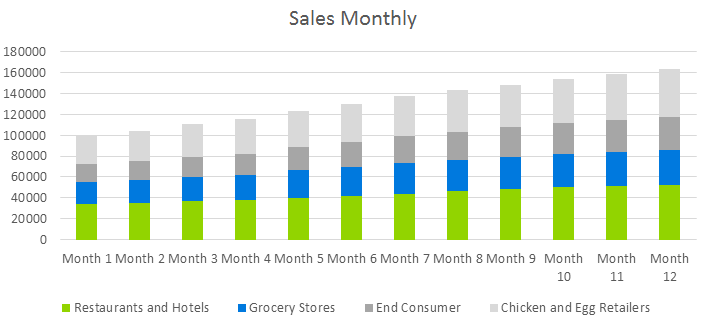
6.4 Sales Yearly
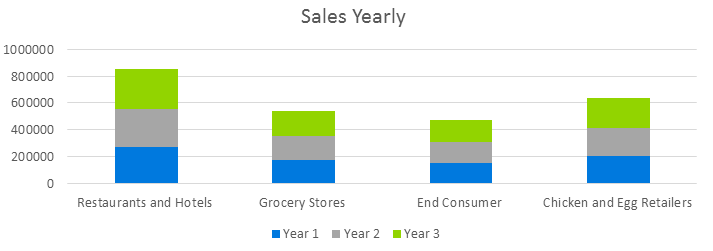
6.5 Sales Forecast
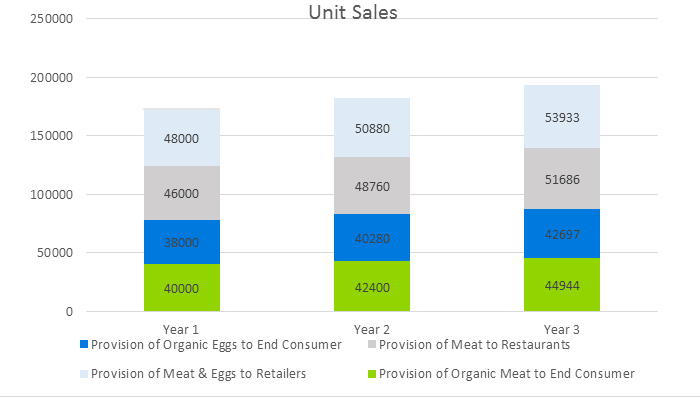
| Sales Forecast | |||
| Unit Sales | Year 1 | Year 2 | Year 3 |
| Provision of Organic Meat to End Consumer | 40,000 | 42,400 | 44,944 |
| Provision of Organic Eggs to End Consumer | 38,000 | 40,280 | 42,697 |
| Provision of Meat to Restaurants | 46,000 | 48,760 | 51,686 |
| Provision of Meat & Eggs to Retailers | 48,000 | 50,880 | 53,933 |
| TOTAL UNIT SALES | 172,000 | 182,320 | 193,259 |
| Unit Prices | Year 1 | Year 2 | Year 3 |
| Provision of Organic Meat to End Consumer | $42.00 | $48.72 | $56.52 |
| Provision of Organic Eggs to End Consumer | $32.00 | $37.12 | $43.06 |
| Provision of Meat to Restaurants | $55.00 | $63.80 | $74.01 |
| Provision of Meat & Eggs to Retailers | $66.00 | $76.56 | $88.81 |
| Sales | |||
| Provision of Organic Meat to End Consumer | $1,680,000.00 | $2,065,728.00 | $2,540,019.15 |
| Provision of Organic Eggs to End Consumer | $1,216,000.00 | $1,495,193.60 | $1,838,490.05 |
| Provision of Meat to Restaurants | $2,530,000.00 | $3,110,888.00 | $3,825,147.88 |
| Provision of Meat & Eggs to Retailers | $3,168,000.00 | $3,895,372.80 | $4,789,750.39 |
| TOTAL SALES | $8,594,000.00 | $10,567,182.40 | $12,993,407.48 |
| Direct Unit Costs | Year 1 | Year 2 | Year 3 |
| Provision of Organic Meat to End Consumer | $40.00 | $46.00 | $51.00 |
| Provision of Organic Eggs to End Consumer | $30.00 | $34.00 | $40.00 |
| Provision of Meat to Restaurants | $53.00 | $60.00 | $70.00 |
| Provision of Meat & Eggs to Retailers | $64.00 | $73.00 | $84.00 |
| Direct Cost of Sales | |||
| Provision of Organic Meat to End Consumer | $1,600,000.00 | $1,950,400.00 | $2,292,144.00 |
| Provision of Organic Eggs to End Consumer | $1,140,000.00 | $1,369,520.00 | $1,707,872.00 |
| Provision of Meat to Restaurants | $2,438,000.00 | $2,925,600.00 | $3,617,992.00 |
| Provision of Meat & Eggs to Retailers | $3,072,000.00 | $3,714,240.00 | $4,530,355.20 |
| Subtotal Direct Cost of Sales | $8,250,000.00 | $9,959,760.00 | $12,148,363.20 |
Personnel plan
This business plan for poultry farm pdf also covers the staff that will be needed to run the farm and all of its operations. Just like a pig farming business plan, this business also needs quite a bit of staff to keep the farm running.
7.1 Company Staff
- Kiley Lawson will be the owner and the CEO of the chicken farming business.
- 2 Managers for procurement and sales.
- 1 Doctor to run the farm.
- 8 Handlers to feed and look after the chicken.
- 3 Drivers for the delivery trucks.
- 4 Salesmen to tun the outlets.
- 4 Delivery boys to deliver the online orders.
7.2 Average Salary of Employees
| Personnel Plan | |||
| Year 1 | Year 2 | Year 3 | |
| Procurement Manager | $13,000 | $14,300 | $15,730 |
| Sales Manager | $13,000 | $14,300 | $15,730 |
| Doctor | $12,000 | $13,200 | $14,520 |
| Handlers | $77,000 | $84,700 | $93,170 |
| Drivers | $21,000 | $23,100 | $25,410 |
| Salesmen | $35,000 | $38,500 | $42,350 |
| Delivery Boys | $28,000 | $30,800 | $33,880 |
| Total Salaries | $199,000 | $218,900 | $240,790 |
Financial Plan
The next thing this start chicken farming business plan needs to cover is the financial plan, an estimate of all the costs involved in setting up this business. Just like a goat farming business plan, we need to have an estimate before we start it.
Here are the costs that the owner will have to arrange:
- The cost of setting up the farm and procuring the machinery.
- The salaries of the staff of the farm for the first 6 months.
- The cost of food for the chicken for the first lot (40 days).
- The cost of setting up outlets to sell the product.
- The cost of promoting the business.
- The cost of buying vehicles to transport the product to the market.
- The money needed to create an online store.
8.1 Important Assumptions
| General Assumptions | |||
| Year 1 | Year 2 | Year 3 | |
| Plan Month | 1 | 2 | 3 |
| Current Interest Rate | 8.21% | 8.22% | 8.24% |
| Long-term Interest Rate | 8.35% | 8.41% | 8.45% |
| Tax Rate | 23.50% | 24.40% | 25.10% |
| Other | 0 | 0 | 0 |
8.2 Break-even Analysis
| Break-Even Analysis | |
| Monthly Units Break-even | 5339 |
| Monthly Revenue Break-even | $131,440 |
| Assumptions: | |
| Average Per-Unit Revenue | $234.00 |
| Average Per-Unit Variable Cost | $0.65 |
| Estimated Monthly Fixed Cost | $163,300 |
8.3 Projected Profit and Loss
| Pro Forma Profit And Loss | |||
| Year 1 | Year 2 | Year 3 | |
| Sales | $8,594,000 | $10,567,182 | $12,993,407 |
| Direct Cost of Sales | $8,250,000 | $9,959,760 | $12,148,363 |
| Other | $0 | $0 | $0 |
| TOTAL COST OF SALES | $8,250,000 | $9,959,760 | $12,148,363 |
| Gross Margin | $344,000 | $607,422 | $845,044 |
| Gross Margin % | 4.00% | 5.75% | 6.50% |
| Expenses | |||
| Payroll | $199,000 | $218,900 | $240,790 |
| Sales and Marketing and Other Expenses | $120,000 | $122,000 | $124,000 |
| Depreciation | $2,231 | $2,300 | $2,400 |
| Leased Equipment | $0 | $0 | $0 |
| Utilities | $2,900 | $3,000 | $3,100 |
| Insurance | $1,900 | $2,000 | $2,100 |
| Rent | $3,000 | $3,100 | $3,200 |
| Payroll Taxes | $28,000 | $29,000 | $30,000 |
| Other | $0 | $0 | $0 |
| Total Operating Expenses | $357,031 | $380,300 | $405,590 |
| Profit Before Interest and Taxes | ($13,031) | $227,122 | $439,454 |
| EBITDA | ($13,031) | $227,122 | $439,454 |
| Interest Expense | $0 | $0 | $0 |
| Taxes Incurred | ($2,606) | $45,424 | $87,891 |
| Net Profit | ($10,425) | $181,698 | $351,563 |
| Net Profit/Sales | -0.12% | 1.72% | 2.71% |
8.3.1 Profit Monthly
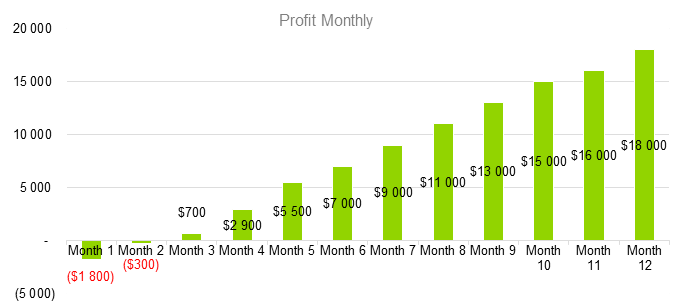
8.3.2 Profit Yearly
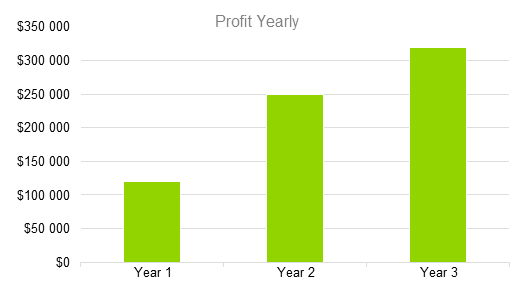
8.3.3 Gross Margin Monthly
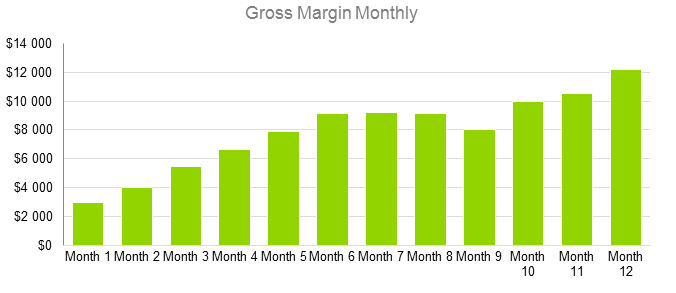
8.3.4 Gross Margin Yearly
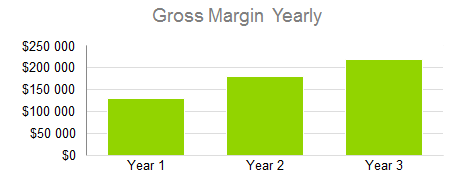
8.4 Projected Cash Flow
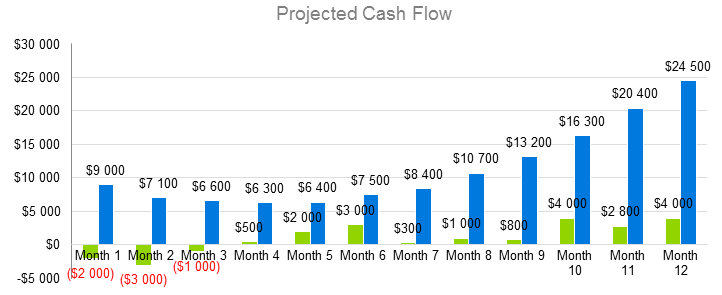
| Pro Forma Cash Flow | |||
| Cash Received | Year 1 | Year 2 | Year 3 |
| Cash from Operations | |||
| Cash Sales | $52,000 | $56,160 | $60,653 |
| Cash from Receivables | $15,000 | $16,200 | $17,496 |
| SUBTOTAL CASH FROM OPERATIONS | $67,000 | $73,030 | $78,872 |
| Additional Cash Received | |||
| Sales Tax, VAT, HST/GST Received | $0 | $0 | $0 |
| New Current Borrowing | $0 | $0 | $0 |
| New Other Liabilities (interest-free) | $0 | $0 | $0 |
| New Long-term Liabilities | $0 | $0 | $0 |
| Sales of Other Current Assets | $0 | $0 | $0 |
| Sales of Long-term Assets | $0 | $0 | $0 |
| New Investment Received | $0 | $0 | $0 |
| SUBTOTAL CASH RECEIVED | $70,000 | $74,000 | $79,000 |
| Expenditures | Year 1 | Year 2 | Year 3 |
| Expenditures from Operations | |||
| Cash Spending | $34,000 | $35,000 | $36,000 |
| Bill Payments | $17,000 | $19,000 | $21,000 |
| SUBTOTAL SPENT ON OPERATIONS | $51,000 | $54,000 | $57,000 |
| Additional Cash Spent | |||
| Sales Tax, VAT, HST/GST Paid Out | $0 | $0 | $0 |
| Principal Repayment of Current Borrowing | $0 | $0 | $0 |
| Other Liabilities Principal Repayment | $0 | $0 | $0 |
| Long-term Liabilities Principal Repayment | $0 | $0 | $0 |
| Purchase Other Current Assets | $0 | $0 | $0 |
| Purchase Long-term Assets | $0 | $0 | $0 |
| Dividends | $0 | $0 | $0 |
| SUBTOTAL CASH SPENT | $52,000 | $56,160 | $60,653 |
| Net Cash Flow | $16,000 | $17,000 | $18,000 |
| Cash Balance | $25,000 | $26,000 | $27,000 |
8.5 Projected Balance Sheet
| Pro Forma Balance Sheet | |||
| Assets | Year 1 | Year 2 | Year 3 |
| Current Assets | |||
| Cash | $268,000 | $300,160 | $330,176 |
| Accounts Receivable | $22,000 | $24,640 | $27,695 |
| Inventory | $3,900 | $4,368 | $4,900 |
| Other Current Assets | $1,000 | $1,000 | $1,000 |
| TOTAL CURRENT ASSETS | $288,000 | $322,560 | $362,557 |
| Long-term Assets | |||
| Long-term Assets | $10,000 | $10,000 | $10,000 |
| Accumulated Depreciation | $16,000 | $17,920 | $20,160 |
| TOTAL LONG-TERM ASSETS | $21,000 | $23,520 | $26,460 |
| TOTAL ASSETS | $291,000 | $325,920 | $366,660 |
| Liabilities and Capital | Year 4 | Year 5 | Year 6 |
| Current Liabilities | |||
| Accounts Payable | $17,700 | $19,824 | $22,282 |
| Current Borrowing | $0 | $0 | $0 |
| Other Current Liabilities | $0 | $0 | $0 |
| SUBTOTAL CURRENT LIABILITIES | $15,020 | $16,822 | $18,908 |
| Long-term Liabilities | $0 | $0 | $0 |
| TOTAL LIABILITIES | $13,000 | $14,560 | $16,365 |
| Paid-in Capital | $28,000 | $30,000 | $30,950 |
| Retained Earnings | $52,000 | $56,680 | $62,348 |
| Earnings | $190,000 | $207,100 | $227,810 |
| TOTAL CAPITAL | $270,000 | $294,300 | $323,730 |
| TOTAL LIABILITIES AND CAPITAL | $283,000 | $325,920 | $366,660 |
| Net Worth | $282,000 | $307,380 | $338,118 |
8.6 Business Ratios
| Ratio Analysis | ||||
| Year 1 | Year 2 | Year 3 | INDUSTRY PROFILE | |
| Sales Growth | 7.24% | 8.02% | 8.89% | 3.00% |
| Percent of Total Assets | ||||
| Accounts Receivable | 9.22% | 10.22% | 11.32% | 9.80% |
| Inventory | 5.40% | 5.98% | 6.63% | 9.90% |
| Other Current Assets | 2.14% | 2.37% | 2.63% | 2.40% |
| Total Current Assets | 150.10% | 151.00% | 152.00% | 158.00% |
| Long-term Assets | 11.50% | 11.55% | 11.57% | 12.00% |
| TOTAL ASSETS | 100.00% | 100.00% | 100.00% | 100.00% |
| Current Liabilities | 4.93% | 4.97% | 5.02% | 4.34% |
| Long-term Liabilities | 0.00% | 0.00% | 0.00% | 0.00% |
| Total Liabilities | 7.62% | 7.68% | 7.75% | 7.38% |
| NET WORTH | 100.83% | 101.64% | 102.57% | 110.00% |
| Percent of Sales | ||||
| Sales | 100.00% | 100.00% | 100.00% | 100.00% |
| Gross Margin | 94.90% | 97.46% | 100.19% | 99.00% |
| Selling, General & Administrative Expenses | 94.80% | 97.36% | 100.09% | 97.80% |
| Advertising Expenses | 1.55% | 1.59% | 1.64% | 1.40% |
| Profit Before Interest and Taxes | 42.00% | 43.13% | 44.34% | 33.90% |
| Main Ratios | ||||
| Current | 34 | 35 | 36 | 32 |
| Quick | 34 | 34.4 | 35.26 | 33 |
| Total Debt to Total Assets | 0.17% | 0.18% | 0.17% | 0.40% |
| Pre-tax Return on Net Worth | 72.66% | 73.00% | 74.00% | 75.00% |
| Pre-tax Return on Assets | 94.80% | 99.54% | 104.52% | 111.30% |
| Additional Ratios | Year 1 | Year 2 | Year 3 | |
| Net Profit Margin | 33.01% | 34.03% | 35.09% | N.A. |
| Return on Equity | 55.02% | 56.73% | 58.48% | N.A. |
| Activity Ratios | ||||
| Accounts Receivable Turnover | 7.7 | 7.8 | 7.8 | N.A. |
| Collection Days | 100 | 100 | 100 | N.A. |
| Inventory Turnover | 31.2 | 32.76 | 33 | N.A. |
| Accounts Payable Turnover | 15.1 | 16 | 16.5 | N.A. |
| Payment Days | 27 | 27 | 27 | N.A. |
| Total Asset Turnover | 2.5 | 2.5 | 2.6 | N.A. |
| Debt Ratios | ||||
| Debt to Net Worth | -0.04 | -0.03 | -0.04 | N.A. |
| Current Liab. to Liab. | 1 | 1 | 1 | N.A. |
| Liquidity Ratios | ||||
| Net Working Capital | $240,900 | $254,390 | $268,636 | N.A. |
| Interest Coverage | 0 | 0 | 0 | N.A. |
| Additional Ratios | ||||
| Assets to Sales | 0.85 | 0.87 | 0.87 | N.A. |
| Current Debt/Total Assets | 1% | 0% | 0% | N.A. |
| Acid Test | 28.12 | 29 | 29.09 | N.A. |
| Sales/Net Worth | 2.1 | 2.1 | 2.1 | N.A. |
| Dividend Payout | 0 | 0 | 0 | N.A. |



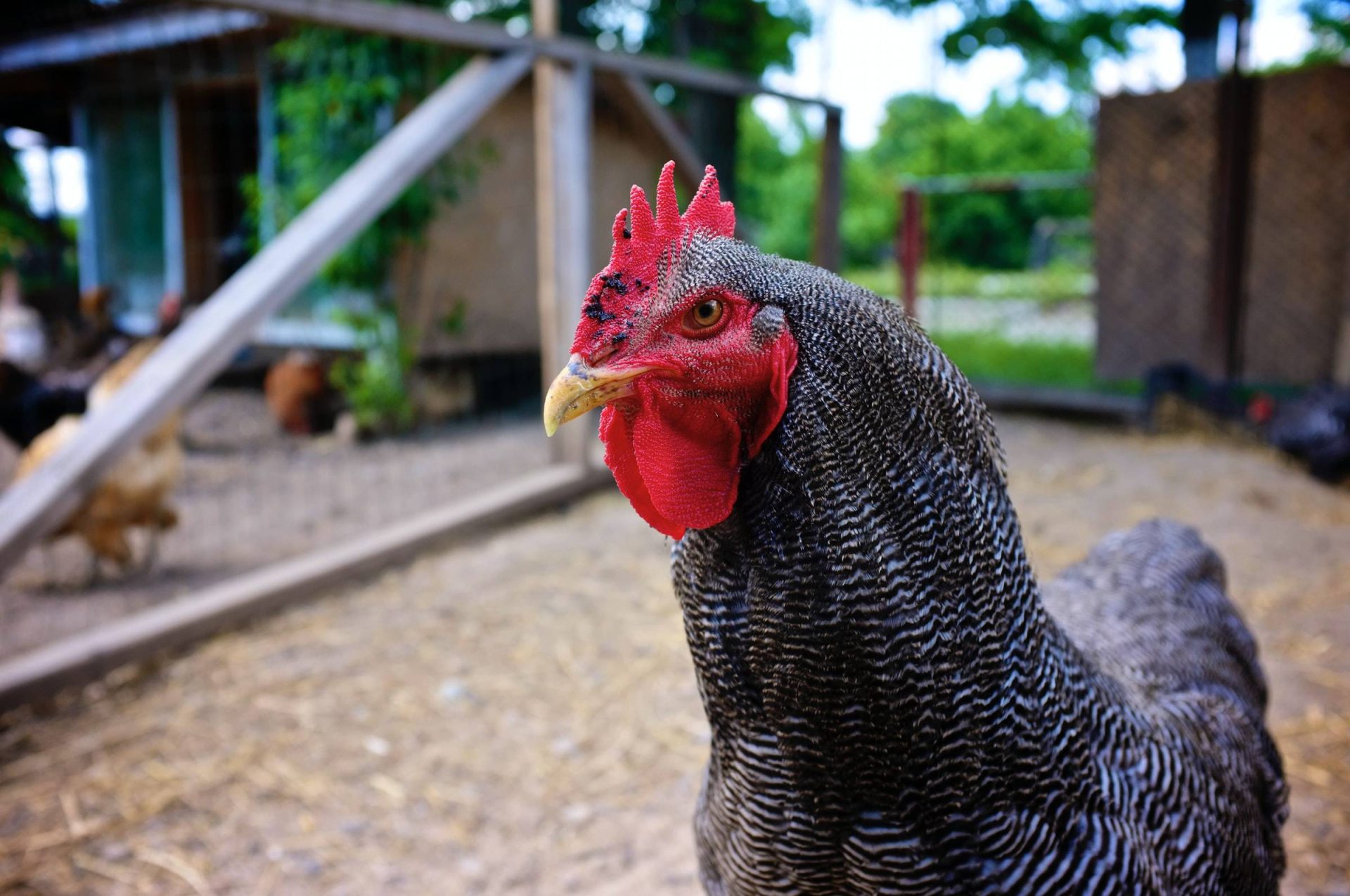
















May i contact u telegram?
https://t.me/ogscapital